Shop
Scaled armor has existed since ancient times. For example, in the VII – III century B.C.E. the Scythians made scaled armor using bronze, iron, bones or thick leather. It is composed of small scales attached to a base material such as leather or cloth. The scales were typically in the shape of slightly elongated fish
Lamellar armor originally came from the East and was primarily used in Eastern Europe. In Scandinavia, lamellar armor was widespread from the Viking Age (793 – 1066) until the second half of the 14th century. Our set of Lamellar Armor with Shoulders includes torso protection and a pair of pauldrons. It is made from metal
Lamellar armor was not as popular as mail in the Early Middle Ages. It is a common misconception that use of lamellar armor was restricted to the nomadic tribes of the Middle East. However, some archaeological findings (Birka, Gotland, Sweden) furnish proof that this kind of armor was used in Scandinavian regions. According to historical
Our Splinted Arm Protection is based on armor from the XIV century. We craft it from 1.5mm cold rolled steel and durable 4mm brown leather. To increase the protective properties of the leather it is treated with a special wax solution and can withstand axe blows. The leather we use is naturally flexible and the reinforcing steel
This Brigandine skirt was made from 1.5mm mild steel. Covered with red wool. It has two rows of leather straps on the sides. You can regulate the comfortable fit. Overlapping articulated steel lames. The thick leather top with holes so you can fix brigandine skirt on the gambeson. Brigandine skirt is an addition to your
Brigandine armor is composed of plates riveted to cloth or leather. This type of armor design was really popular and common in Medieval Europe. Obviously, it was much easier (and cheaper as well) to use pieces of iron or steel than to shape a flat sheet of metal. Images of brigandine type spaulders can be
Our Brigandine Arms are completed with steel elbow cops and the plates are made of 1.5mm cold rolled steel. Each plate is covered by the black paint on both sides to provide additional protection against rust (with the exception of the elbow cops which on painted on the interior only). The inner material is canvas,
Gauntlets with metal plates were first mentioned in the last decade of the XIII century. Before this, gloves were made of leather soaked in wax and were reinforced by iron, steel or brass plates. The construction of brigandine gauntlets of this period was similar to the way a coat of plates was made. Steel plates
Our Brigandine Arms with Splinted Segments consist of biceps, articulated elbows, vambraces (brassards) which are reinforced with steel plates. The perfectly articulated elbows are riveted to the arms – no holes, no leather laces. The upper arms have leather points that allow you to affix the armor to your gambeson. Our Brigandine Arms are equipped
Gauntlets without separate fingers were developed during the early XV century. The idea was to create good protection for the palm in which four fingers would be covered by one large steel plate. This type of armor was called Mitten Gauntlets, Hentzen (German), mitons (French), ormittene (Italian). They were commonly used both on battlefields and
Possessed of a tapered wrist that widens at the elbow, “tulip” shaped brassards were popular during the XIV and beginning of the XV century. The main examples of this type of arm armor can be found in Churburg Castle (Castel Coira) in South Tirol as well as the arms of Charles VI (made when he

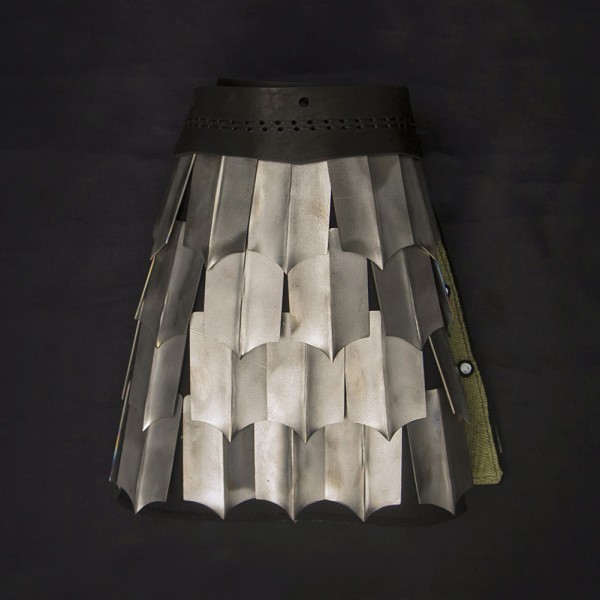
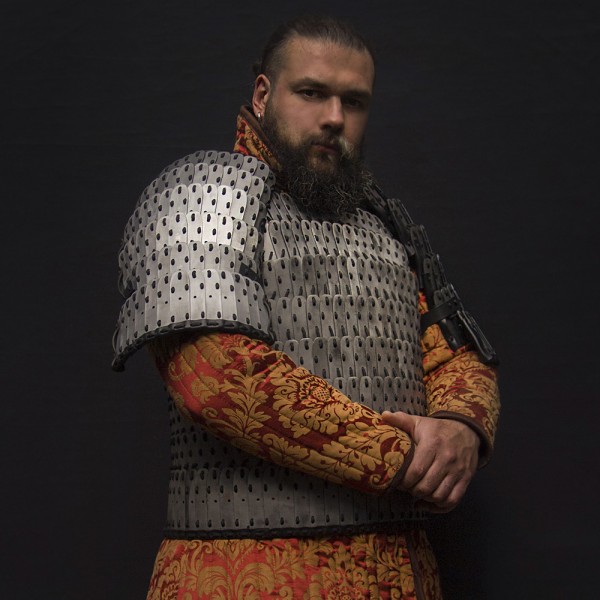
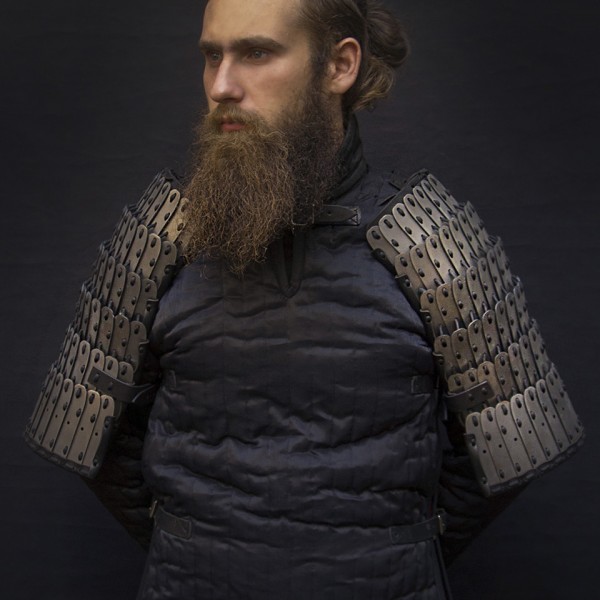
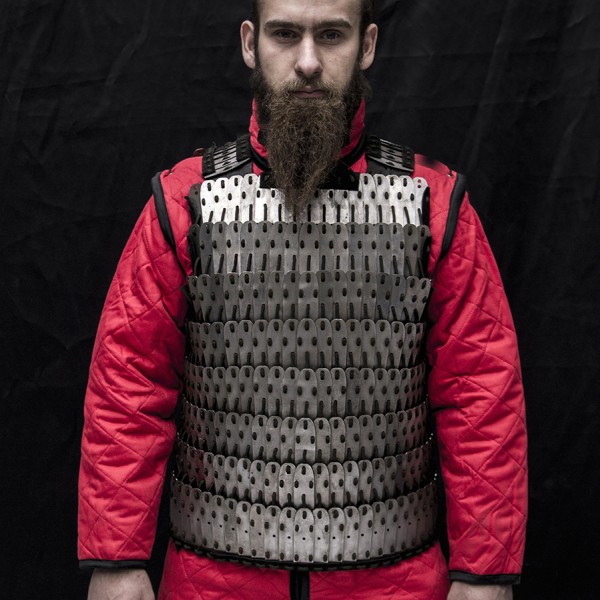
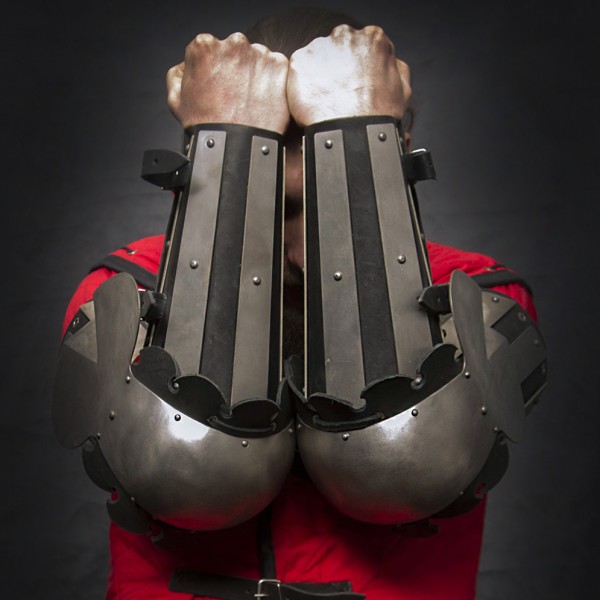
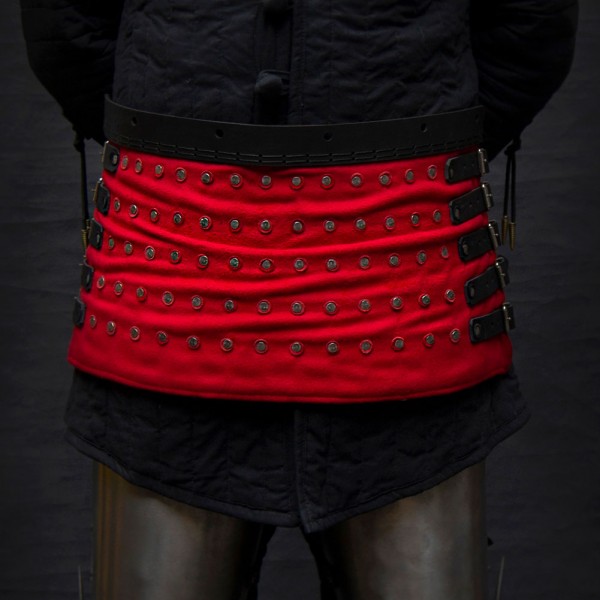
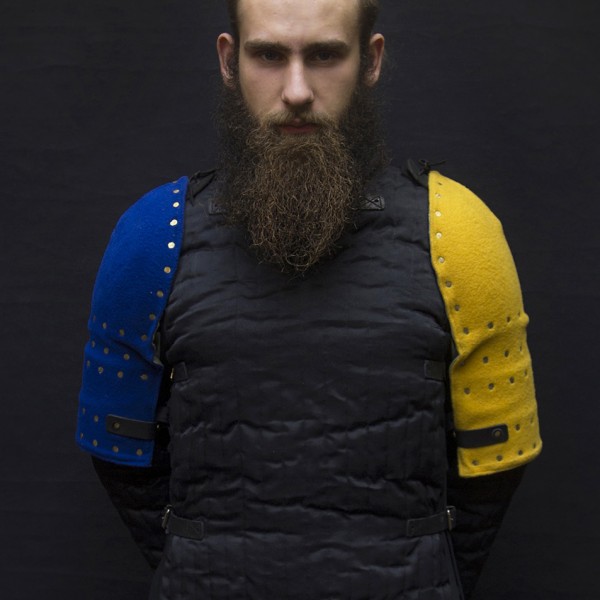
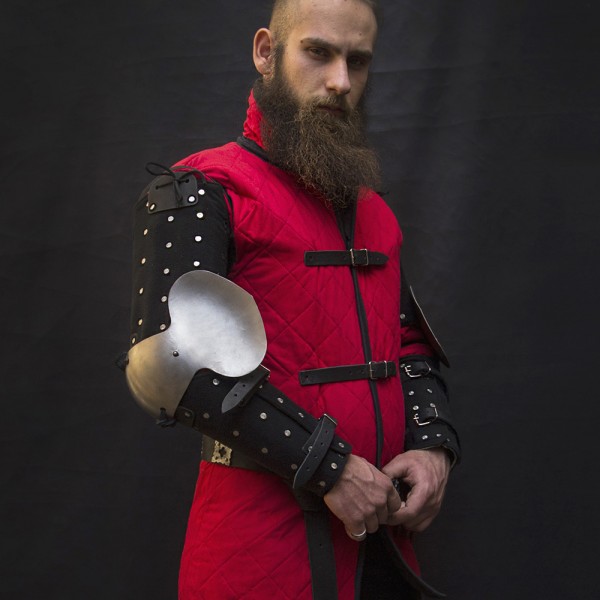
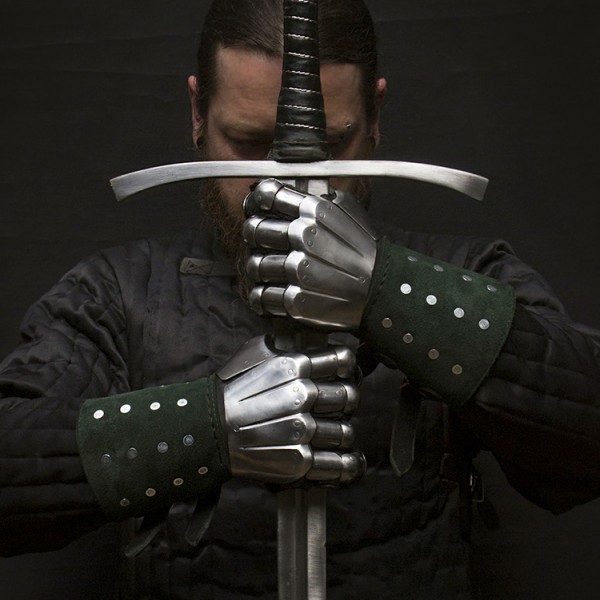
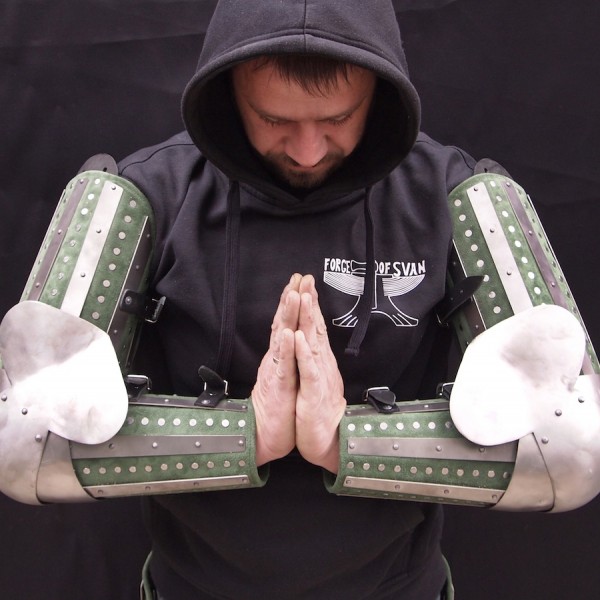
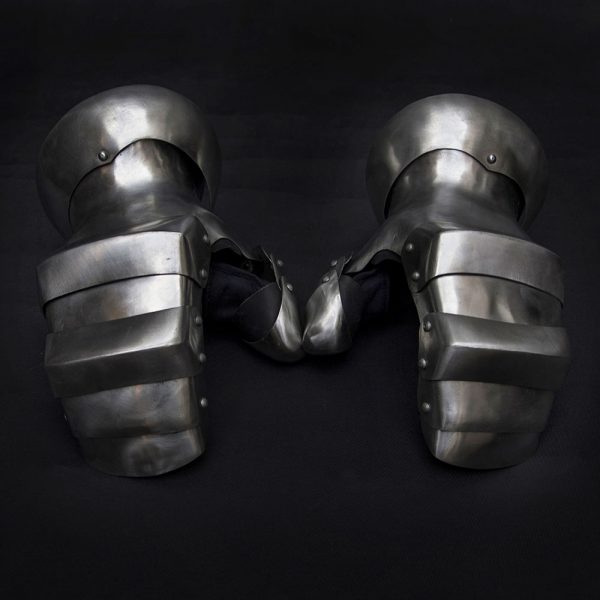

 Shop
Shop